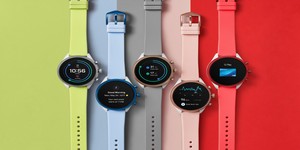Microsoft shows off wearable battery-boosting tech
July 13, 2015 | 11:57
Companies: #microsoft #microsoft-research

Microsoft researchers have announced a paper detailing a means of offloading tasks from a wearable gadget in order to dramatically boost battery life.
The market for wearable electronics - primarily smartwatches, although numerous companies including Microsoft itself are working hard at making augmented reality goggles a thing - is expected to grow considerably in the coming years, but the technology available today still has a major stumbling block: battery life. Batteries are bulky things, and to provide enough power to run a useful gadget is a problem. The result: devices are either made with a runtime of several days but a somewhat bulky body and limited display, or - as with the recently-launched Apple Watch - look and feel spectacular but need charging before the day is through.
Microsoft has announced a project of its researchers Anirudh Badam and Ranveer Chandra, WearDrive, which promises to address this issue. The concept is simple: instead of doing processing on the wearable, do it on the phone. With its bigger battery and more powerful process, the smartphone to which a wearable is connected is far more suited to the heavy lifting, the pair argue, while the wearable can take care of lighter tasks like sending and receiving data and displaying it to the user.
Testing the technology with an Android handset and third-party wearable - not Microsoft's own smartphone and wearable products, interestingly - the researchers claim that they found significant improvements in the battery life of the wearable along with only a small drop in the run-time of the phone. The system is also graceful: when the phone and wearable are apart, the wearable can work independently - at a cost to its battery life, naturally.
Microsoft has already brought the technology to the attention of its wearables division, but there is no plan to put WearDrive into the Microsoft Band - but future products could, the company has claimed, benefit. More information on WearDrive, including the claim that it has been proven to boost battery life almost four-fold while simultaneously increasing the performance of wearable apps by nearly nine times, is available from the research paper, presented at the USENIX Annual Technical Conference this month.
The market for wearable electronics - primarily smartwatches, although numerous companies including Microsoft itself are working hard at making augmented reality goggles a thing - is expected to grow considerably in the coming years, but the technology available today still has a major stumbling block: battery life. Batteries are bulky things, and to provide enough power to run a useful gadget is a problem. The result: devices are either made with a runtime of several days but a somewhat bulky body and limited display, or - as with the recently-launched Apple Watch - look and feel spectacular but need charging before the day is through.
Microsoft has announced a project of its researchers Anirudh Badam and Ranveer Chandra, WearDrive, which promises to address this issue. The concept is simple: instead of doing processing on the wearable, do it on the phone. With its bigger battery and more powerful process, the smartphone to which a wearable is connected is far more suited to the heavy lifting, the pair argue, while the wearable can take care of lighter tasks like sending and receiving data and displaying it to the user.
Testing the technology with an Android handset and third-party wearable - not Microsoft's own smartphone and wearable products, interestingly - the researchers claim that they found significant improvements in the battery life of the wearable along with only a small drop in the run-time of the phone. The system is also graceful: when the phone and wearable are apart, the wearable can work independently - at a cost to its battery life, naturally.
Microsoft has already brought the technology to the attention of its wearables division, but there is no plan to put WearDrive into the Microsoft Band - but future products could, the company has claimed, benefit. More information on WearDrive, including the claim that it has been proven to boost battery life almost four-fold while simultaneously increasing the performance of wearable apps by nearly nine times, is available from the research paper, presented at the USENIX Annual Technical Conference this month.

MSI MPG Velox 100R Chassis Review
October 14 2021 | 15:04








Want to comment? Please log in.